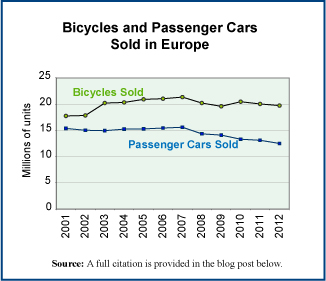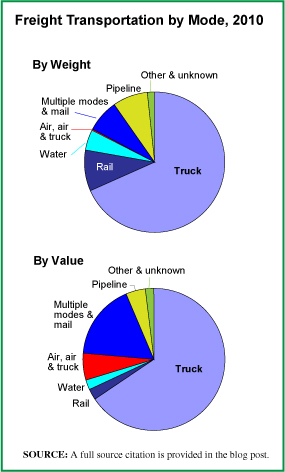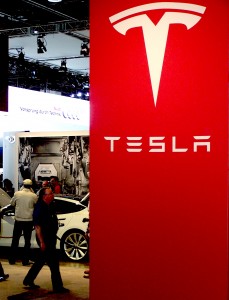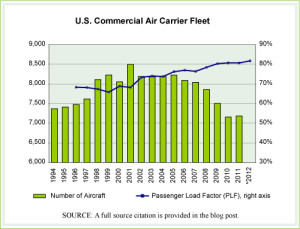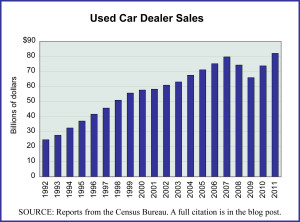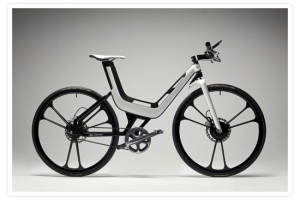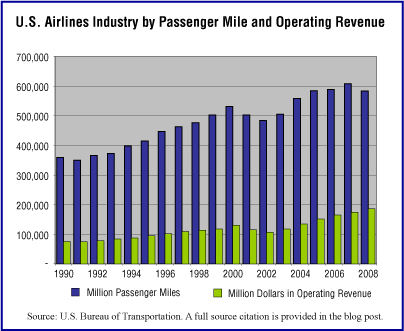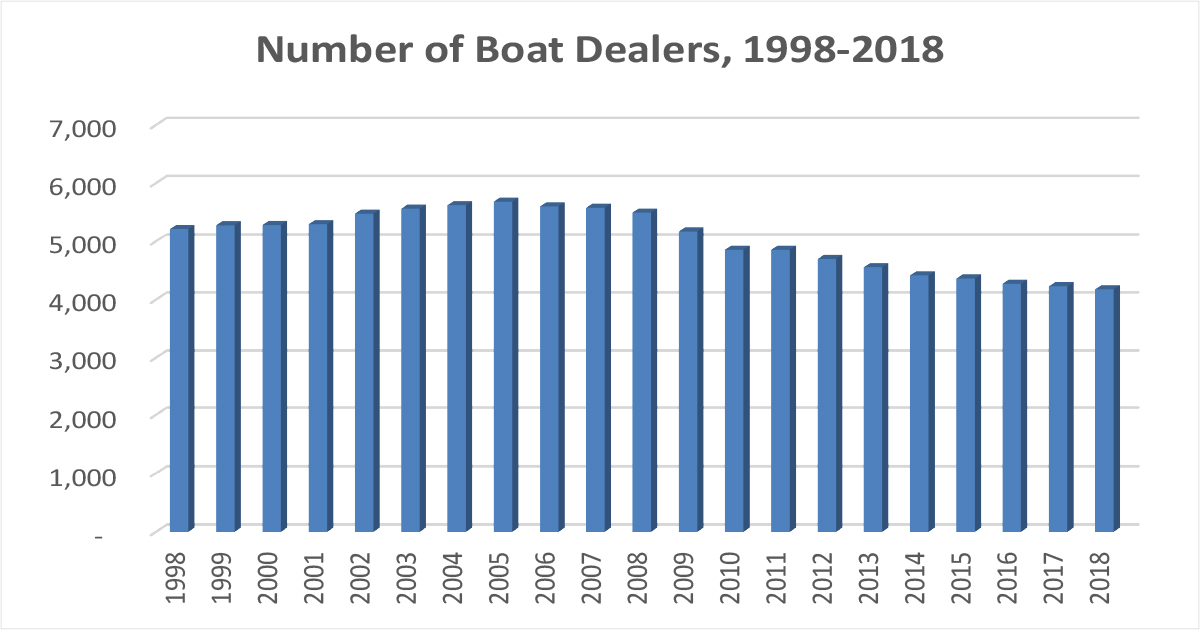
Year: 1998, 2008, 2018
Market size: 5,219, 5,500, and 4,178, respectively
Each year approximately 141 million people in the United States go boating. With summer winding down and Labor Day past, many may be getting ready to put their boats in storage for the winter, while others may be dreaming of next summer and being out on the water in a newly-purchased watercraft of their own. Today’s market size shows the number of boat dealers in the United States in 1998, 2008, and 2018.1 Dealers sell new and used boats, boat motors, and trailers. Some dealers also offer replacement parts and repair services.
Sales of boats, marine products, and services totaled $42 billion in 2019. This same year, 11,878,542 recreational vessels were registered in the United States, up slightly from 2018. These numbers are expected to be significantly higher in 2020 as sales of new boats increased by 75% from the previous year. With many people canceling their summer vacations and children’s summer camps staying closed due to COVID-19, some chose to spend the money they would’ve spent on these activities on a boat instead. According to Ellen Bradley of the National Marine Manufacturers Association, “people are realizing it is a safe environment for social distancing. [They] are in an environment where [they] can control what [they] encounter, who [they] go boating with.” In some cases, however, demand was outpacing production, as several boat manufacturers shut down either temporarily or permanently in March as a result of the effects of the stay-at-home orders imposed by many state governments. Ninety-five percent of boats sold in the United States are made in the U.S. According to Boating Industry, the top 10 dealers in the United States for 2019 were Quality Boats of Clearwater Inc., M & P Mercury Sales Ltd., Marine Connection, Regal & Nautique of Orlando, BMC Boats, Irwin Marine – NH, Marine Sales Group Inc., Futrell Marine, Hampton Watercraft & Marine, and Buckeye Sports Center.
1 According to a report by Dun & Bradstreet First Research, the number of boat dealers totaled about 4,300 in 2020.Sources: County Business Patterns, U.S. Census Bureau, various years available online here; “U.S. Boat Sales Reached Second Highest Volume in 12 Years in 2019, Expected to Remain Strong in 2020,” Business Wire, January 7, 2020 available online here; “Exerpt from Boat Dealers Industry Profile,” Dun & Bradstreet First Research, June 22, 2020 available online here; “Recreational Boating: An American Pastime & Economic Engine,” National Marine Manufacturers Association available online here; “Boat Sales Have Increased by 75 Percent in 2020 as Consumers Seek Ways to Enjoy Summer,” WJLA, July 3, 2020 available online here; “Top 100 Dealers,” Boating Industry, December 2019 available online here; 2019 Recreational Boating Statistics, U.S. Department of Homeland Security, U.S. Coast Guard, Office of Auxiliary and Boating Safety, June 4, 2020 available online here; Ed Killer, “Coronavirus: One of Florida’s Largest Boat Builders Shutters as Sales Plunge Amid COVID-19; 500 Out of Work,” TCPalm, April 2, 2020 available online here.
Image source: Created in house from County Business Pattern data.


